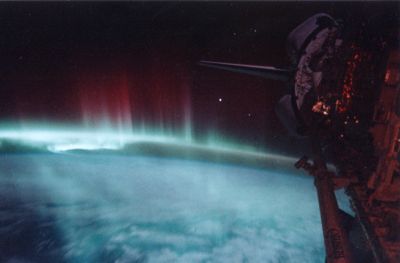Stella orientation.
Discussion
Please excuse my ignorance while I try to get my bearings. Many photos I've seen show the Milky Way, looking from Earth, as a vertical image. Is this actual or a representation? Are 'we' at an angle of 90 degrees to the perpendicular? If one was at the pole would the MW be horizontal?
Eric Mc said:
The angle the line of the MIlky Way shows in the night sky is also dependent on the time of night your are looking at it, the time of the year you are looking at it and also whether you are in the northern or southern hemisphere.
Which reminds me of a question that came to mind last night - are there Southern Lights as well as Northern ones? (yes I could google it but answers here are more fun!)Simpo Two said:
Eric Mc said:
The angle the line of the MIlky Way shows in the night sky is also dependent on the time of night your are looking at it, the time of the year you are looking at it and also whether you are in the northern or southern hemisphere.
Which reminds me of a question that came to mind last night - are there Southern Lights as well as Northern ones? (yes I could google it but answers here are more fun!)Any planet that possesses an atmosphere and a magnetic field will have an aurora at both poles. Jupiter, Saturn, Uranus and Neptune all have aurorae. The ones at Jupiter are the biggest and brightest -



Not me - and I've got a rubbish sense of balance.
I'm sure it won't be long before they start picking up signs of auroral activity on Exo-Planets.
Some of the most stunning shots of the earth's aurorae (north and south) have come from Space Shuttle missions and the International Space Station. In fact, both the Shuttle and the ISS orbit at such a relatively low altitude (300 miles or so) that they frequently pass ("passed" when referring to the Space Shuttle of course) through the aurorae.


I'm sure it won't be long before they start picking up signs of auroral activity on Exo-Planets.
Some of the most stunning shots of the earth's aurorae (north and south) have come from Space Shuttle missions and the International Space Station. In fact, both the Shuttle and the ISS orbit at such a relatively low altitude (300 miles or so) that they frequently pass ("passed" when referring to the Space Shuttle of course) through the aurorae.


Gassing Station | Science! | Top of Page | What's New | My Stuff




